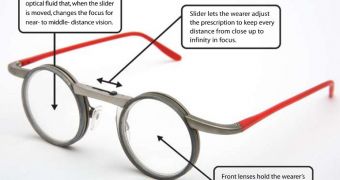NASA has just sent a new type of technology to the International Space Station that, if successfully tested, could become part of our daily lives here on Earth. The Superfocus glasses are meant to help aging astronauts see better at close distance, and they could help millions in the same condition.
At this point, the average age of astronauts working for the American space agency is 48, which means that many of the people who go to space suffer from a common eye condition called presbyopia.
In this disease, the lenses of the aging eyes becomes stiffer, and can no longer focus on nearby objects with the same ease as they do when people are younger. The condition also affects a large portion of the aging general population, both in the United States and abroad.
Until now, this defect was corrected using bifocals or progressive lenses, but these approaches have their limitations. These include blurred vision, a narrower field of view and even distortions.
In the case of astronauts, who spend most of their time in space looking at objects that are within 4 or 5 feet away, gaining the ability to focus their eyes with ease would constitute a great improvement.
This is precisely the need that the Superfocus glasses were created to meet. “I think this is going to be a significant improvement for some individuals,” says NASA Space Medicine vision consultant C. Robert Gibson.
These glasses are special in that they contain an inner and an outer lens. The latter holds the distance prescription, while the former contains a clear fluid, which can be adjusted via a slider.
The slider is located on the bridge connecting the lenses, and it allows the wearers to switch the focus of their lenses from nearby to far away. “We mimic the natural action of the lens inside your eyeball,” explains Superfocus CEO Adrian Koppes.
With a simple slide of the bar, users can switch the focus of their eyes from reading a book to looking across the room. Astronauts aboard the ISS are currently testing these glasses to see how they handle in microgravity.
Two pairs of Superfocus glasses were taken to orbit aboard the space shuttle Discovery, which docked to the orbital facility on Saturday, February 26. They will need to endure until the current crew is changed, and the first batch of three astronauts rotates back home.
If successful, the new technology could be employed back on Earth too, at a much larger scale, Space reports.

 14 DAY TRIAL //
14 DAY TRIAL //